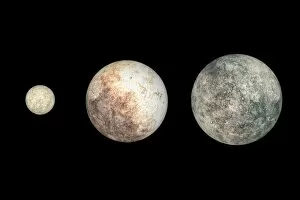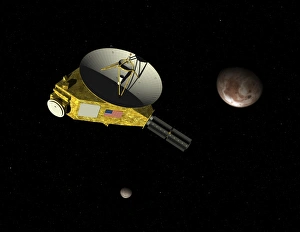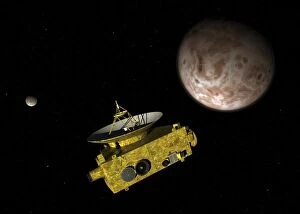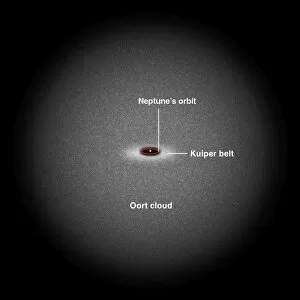Trans Neptunian Objects Collection
"Exploring the Mysteries of Trans-Neptunian Objects: New Horizons Unveils Pluto and Beyond" As the New Horizons spacecraft embarks on its historic journey
All Professionally Made to Order for Quick Shipping
"Exploring the Mysteries of Trans-Neptunian Objects: New Horizons Unveils Pluto and Beyond" As the New Horizons spacecraft embarks on its historic journey, it draws closer to the enigmatic dwarf planet Pluto and its captivating moon Charon. The Pluton, accompanied by its big moon Charon and illuminated by the distant Polaris star, reveals a mesmerizing celestial dance in our vast universe. Dwarf planets Ceres, Pluto, and Eris stand as remarkable representatives of this uncharted realm beyond Neptune's orbit - beckoning us to unravel their secrets. With awe-inspiring precision, the New Horizons spacecraft hovers over dwarf planet Pluto and its loyal companion Charon, capturing breathtaking images for humanity to behold. Witnessing this extraordinary encounter as New Horizons flies by dwarf planet Pluto and its enchanting moon Charon leaves us spellbound with wonderment. Through an artist's concept of Pluto and its devoted moon Charon, we catch a glimpse of their ethereal beauty that has captivated scientists worldwide. Makemake emerges from the depths of space as a fascinating plutoid residing in a region far beyond Neptune - inviting us to explore further into this cosmic expanse. A diagram illustrating the extent of the Kuiper Belt and Oort Cloud unveils an astonishingly vast collection of trans-Neptunian objects that await discovery. From atop a large Kuiper Belt Object's surface comes an awe-inspiring view that reminds us how these distant worlds hold untold wonders yet to be explored. Quaoar stands proudly as one among many large Kuiper Belt Objects gracefully orbiting beyond Pluto - expanding our understanding of what lies within this mysterious domain. Artist's concept art offers glimpses into what may lie beneath the veil; unveiling atmospheric marvels on distant Pluto – a world that continues to surprise and inspire.














